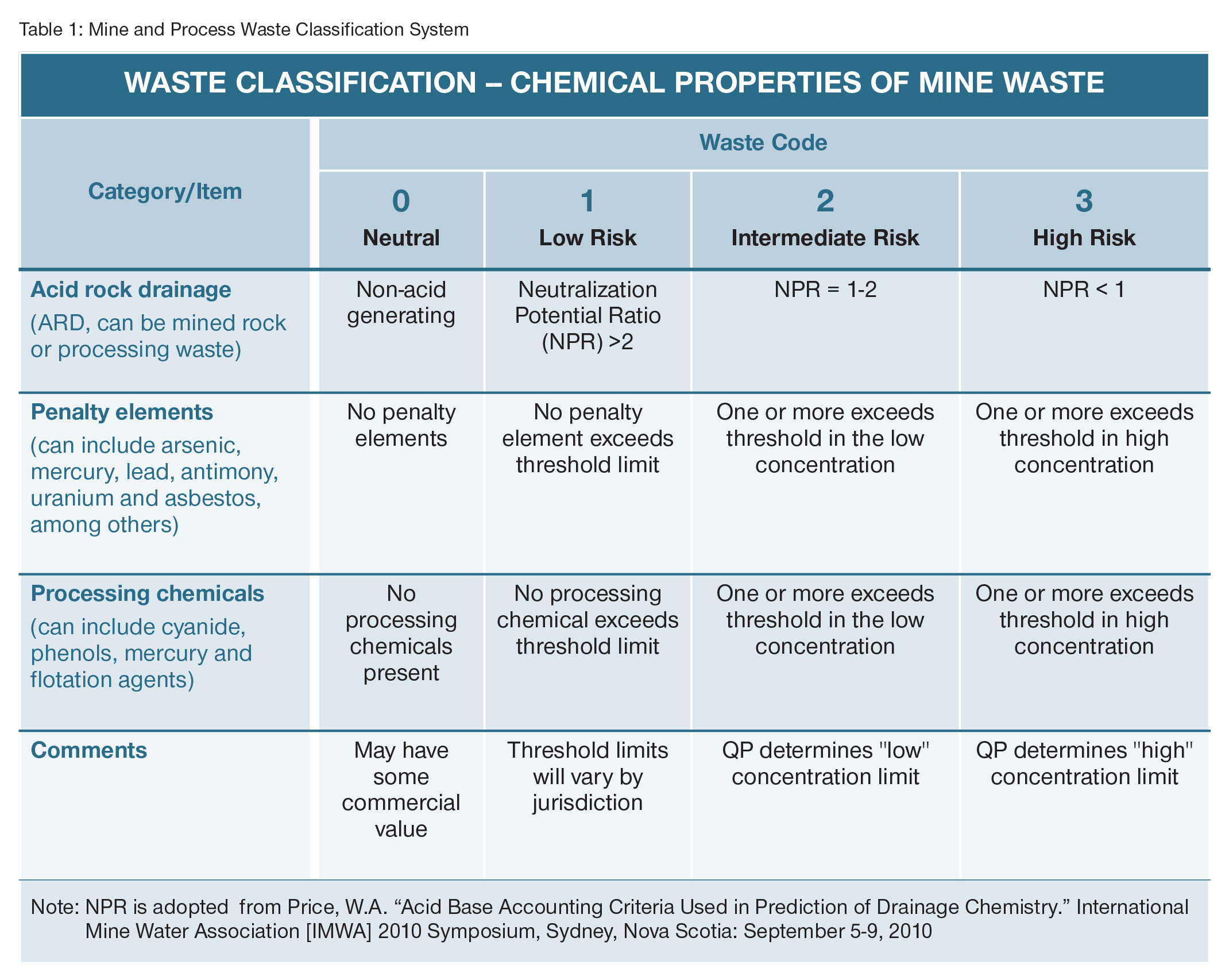Courtesy of Ljiljana Josic (left) and Lawrence Devon Smith (right)
Mine waste materials – both from mines and mineral processing plants – and their environmental and social impacts are under increasing scrutiny. The cost of managing this waste is growing, legislation and engineering study requirements are rising and permitting schedules are getting longer. All these factors have a significant impact on mining decisions, and we should prepare for a future in which public disclosure of mine waste materials will be required.
One of the most helpful contributions to mining practice in recent years has been the standardization of a classification system for Mineral Resources and Mineral Reserves. It has given us a clear, universal language with which to convey complex concepts about mineral material. With the rising profile of mine waste and waste treatment, it is now time to establish a standardized classification system for mine waste materials.
Currently, all waste is lumped together. However, not all mine waste rock and tailings produce acid rock drainage (ARD), and this material can be separated out, as it does not need to be treated, while other ARD-producing rock or tailings can be highly reactive and require a great deal of attention. This has implications for permitting, costs and social perception. We need a way to identify these differences and to convey them, both among ourselves in the industry and for the public disclosure that is inevitably coming.
We propose a simple waste classification code (numbered 0 to 3) that could be applied to any waste material. The four waste codes would entail the following:
Code 0: The waste material is neutral for ARD and/or contains no deleterious materials. (Note that this material could be ARD suppressing.) Some Code 0 material may have commercial value, such as coarse or fine aggregates, landscaping stone, ARD-suppression material, etc.
Code 1: The waste material is below the legislated threshold levels for ARD and/or deleterious materials (note that thresholds will vary by jurisdiction).
Code 2: The waste material exceeds the legislated threshold levels for ARD and/or deleterious materials and requires a reasonable level of treatment.
Code 3: The waste material greatly exceeds the legislated threshold levels for ARD and/or deleterious materials and requires an aggressive and prolonged level of treatment. A Qualified Person (QP), as defined in NI 43-101, would make the determination between Codes 2 and 3.

The proposed classification system is illustrated in the table. For the purposes of discussion, the table presents the three broad categories for waste materials: ARD potential; penalty elements in mine waste rock; and chemical substances in processing waste products, such as tailings and residues. However, the list of waste materials can be as detailed as required to identify specific elements, chemicals or characteristics, such as radioactivity, turbidity, etc.
We have proposed this mining and process waste classification system to provide the mining industry with a way of describing mine and process waste in a clear and straightforward manner, both within the industry and to the public. It is an essential step, and one that we should not delay in putting in place, as communicating these ideas clearly is not only necessary but inevitable.
Ljiljana Josic, P.Eng., is a manager of mine waste management for mining and metallurgy at SNC-Lavalin. Lawrence Devon Smith, P.Eng., is the principal consultant at Lawrence, Devon, Smith & Associates.
Got an opinion on one of our columns? Send your comments to editor@cim.org.





